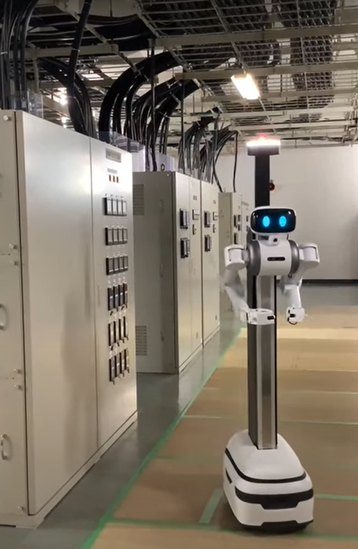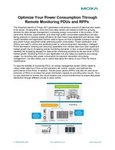Microsoft plans to build a team to research data center automation and robotics.
The company is hiring for a hardware automation team manager with a specialism in robotics, DCD can reveal.
"As the Team Manager - Hardware Robotics, for our robotics and automation department, you will play a pivotal role in shaping the future of data center operations," the job listing states.
"The successful candidate will be responsible for orchestrating a harmonious environment where innovation thrives. You will ensure that the team's efforts align seamlessly with our broader organizational goals, fostering collaboration, setting clear targets, and ensuring that projects meet quality standards within designated deadlines."
On LinkedIn, Microsoft's senior director of data center research Sean James said: "Best job ever! Where are my automation people? I am creating a team dedicated to the automation of data center operations. We want our DCs to be safe and efficient!"
The move comes a month after a Microsoft Azure outage in Australia was partially blamed on poor software automation. A utility power sag tripped cooling units, shutting them down and causing temperatures to rise. With insufficient staff on site to reboot the units, the automated system shut down servers to protect them from overheating. Instead, the system could have been designed to reboot the cooling units.
“We are exploring ways to improve existing automation to be more resilient to various voltage sag event types,” Microsoft said in a post-mortem.
Robots and data centers have a long history, with numerous companies and research groups trying to build computers that could look after fellow computers.
But, as a 2021 DCD report found, progress has been slow and is littered with failures, notably Switch's robot sentry which was quietly removed from the company's website.
Hyperscalers, with their huge data center footprint and generous research budgets, appear set to lead the next wave of robotic data centers.
"As far as robotics, our hyperscale data centers are more like warehouses and most of the processes require a robot to navigate to a specific location to perform a task," Google's VP of data centers Joe Kava told DCD in 2021.
“However, even as advanced as robotics have become, many of the tests in data centers are much more complicated than in other industries that have employed large-scale robotic implementations."
The company currently uses a robot arm to help destroy hard drives, but adding machines to buildings with humans is fraught with risk. A 2021 investigation by DCD revealed that the company had deployed in-house designed server lifts which ended up crushing workers.
Meta, meanwhile, started a Site Engineering Robotics Team in 2019 to build "robotics solutions to automate and scale Facebook's data center infrastructure operations."
A current job listing confirms that the team is still active, with the role calling for someone who can "develop systems architecture for robotic systems including robot manipulators," and "lead robotic manipulator integration in mobile robotic platforms" for systems within data centers.
Amazon has been much quieter about its data center robotics plans, but has a decades-long investment in designing robots for its e-commerce arm.
It has acquired multiple robotics companies and has deployed more than 750,000 mobile robots across its warehouse footprint. An investigation by Reveal from the Center for Investigative Reporting found Amazon’s warehouses with robots have higher injury rates than facilities without automation.
Digital Realty, Novva, Oracle, and Scala have all tested robotic dogs for surveillance and collecting sensor data.
NTT Data has rolled out a simple torso-on-wheels robot equipped with arms & basic claw at 15 data centers that can test humidity, thermal issues, and other data points, alongside performing rudimentary tasks. In an apparently separate effort, NTT Comms is also working on data center robot.
Robots may also prove useful at the Edge, where the economics of small data centers don't support on-site staff.
Larger 'lights-out' data centers that don't need humans will likely be further off, as robotics and automation slowly replace specific human tasks. This may further impact public perception of data centers, with the sector already facing criticism and local pushback for the small number of jobs the large and power-hungry buildings support.
Notably, Microsoft's outage post-mortem also pointed to a simpler solution to avoiding similar incidents: "The staffing of the team at night was insufficient to restart the chillers in a timely manner.
"We have temporarily increased the team size from three to seven, until the underlying issues are better understood and appropriate mitigations can be put in place."







